One of the foremost incentives for purchasing my own grain mill was rye.
From coarsely milled rye grains soaked and added to wheat dough, to freshly milled flour and a thriving rye starter.
Rye has been on my mind this week … probably a little too much to be called healthy. So with some free time available last night, I shifted thinking into practise.
Rye and Mixing
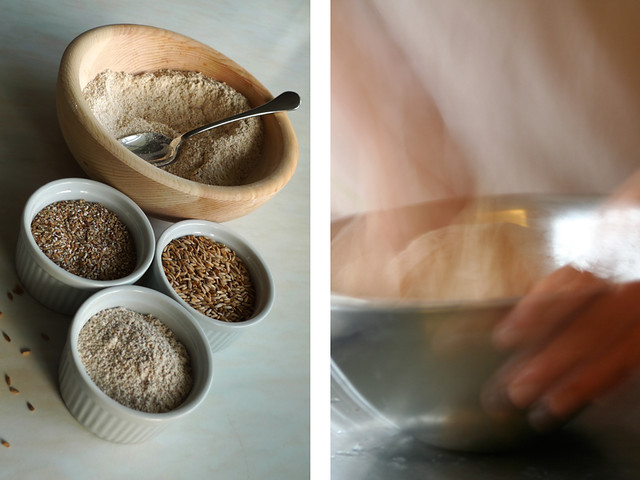
The first bread is a Dark Sour Rye. The formula is kind of pieced together from bits of knowledge and tips gathered from around the web (namely Danubians formula) This was the first time baking rye in my 8x4x4 pullman pan so quite a bit of guess work went into the amount of dough required to fill it…this will be an ongoing process as I was a still little short on the correct amount.
Dark Sour Rye
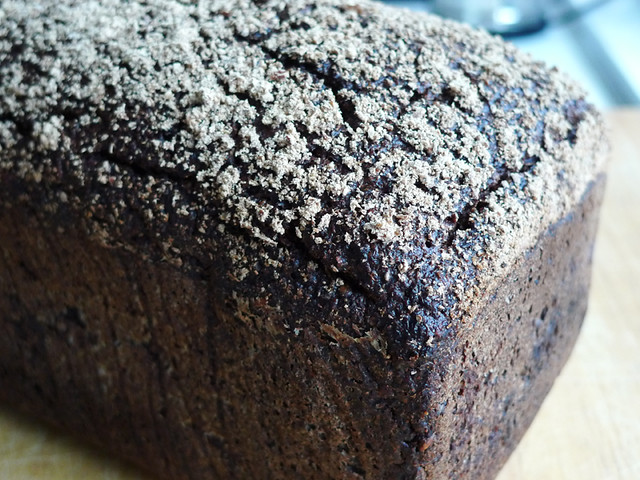
Total dough weight: 3kgs
Hydration: 85%
Prefermented Flour: 35%w
DDT: 29°C
Day before
Rye sour (20hrs @ 28°C)
Starter: 30g
Freshly milled rye flour: 612g
Water: 690g
Morning before
Soaker (12hrs @ 20°C)
Cracked rye: 525g
Water: 525g
Final Dough (29°C)
Rye sour: 1224g
Soaker: 1050g
Freshly milled rye flour: 613g
Water: 275g
Salt: 35g
Bulk ferment for 30 mins. Using wet hands, divide, scale, shape and then place into greased tins seams down dusted on top with flour
Prove for about two hours
Bake in steamed oven at 250˚C for 10 mins then turn down to 190˚C and bake for a further two hours. Turn down to 150˚C bake for one hour. Turn down to 100˚C and bake for a further two hours with oven set to auto shutoff and allow to cool in oven until morning.
We went to bed with the heady smell of caramelised rye pervading the house … it seemed like it was even throughout my clothing.
Oiled and wrapped
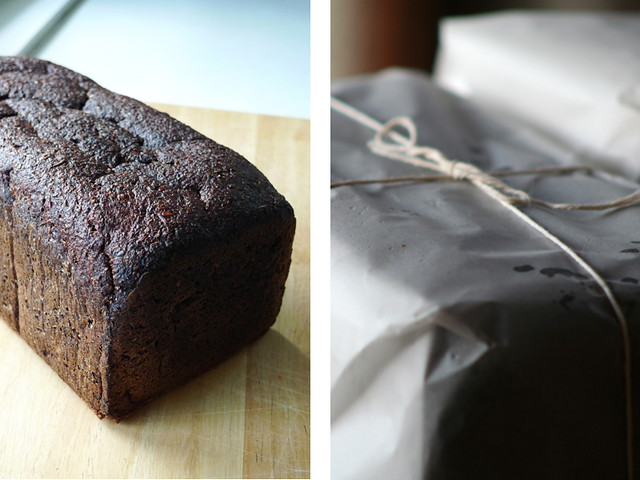
When I arose in the morning the tins were still warm and the bread was a heavenly dark chocolate colour. I brushed them with grapeseed oil after cooling, wrapped them in paper and set them aside for the excruciating long wait until cutting. I also realised late into the bake that I had neglected to dock the larger loaf so I am expecting a flying crust … to be continued ….
The second dough was an experiment in using my rye starter on a sifted wheat bread and overnight rise in the fridge. It was time to get out of my comfort zone as I have been hesitant to retard the dough for fear of over proving. I also used a fair sized portion of soaked cracked rye for some added texture to the crumb.
Quite Light Cracked Rye

Total dough weight: 1kgs
Hydration: 82%
Prefermented Flour: 15%
DDT: 24°C
Soaker
Morning before (12 hrs)
Cracked rye: 66g
Water: 66g
Final Dough
Freshly milled rye starter @ 110% Hydration: 173g
Sifted freshly milled wholewheat flour: 467g
Soaker: 132g
Water: 293g
Salt: 12g
Milling Wheat
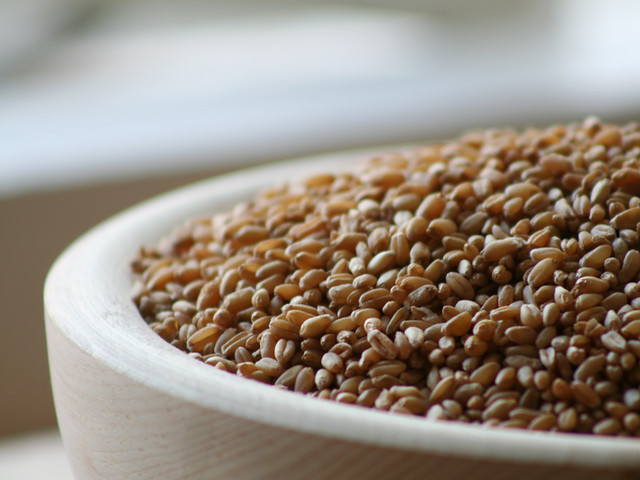
Autolyse flour and water for one hour.
With wet hands squeeze and incorporate starter into dough until smooth and feel no lumps then knead for 10 mins (I use slap and fold). Rest dough for five mins. Incorporate salt and soaker and knead for a further five mins.
Bulk ferment three hours with three stretch and folds 30min apart in the first 1.5hrs.
Preshape. Bench rest 20 mins. Shape.
Final proof was roughly 30 mins at room temperature (23°) then into fridge for eight hrs.
Bake direct from fridge in preheated dutch oven for 10 mins at 250°C then a further 20 mins at 200°C. I them removed it from dutch oven and baked for a further 30 mins directly on stone for even browning.
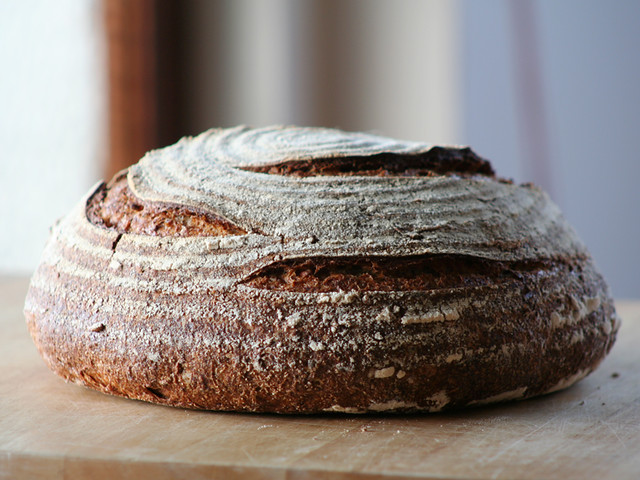
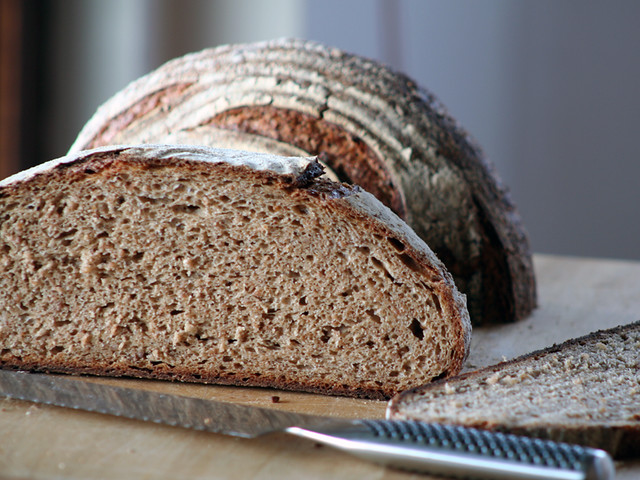
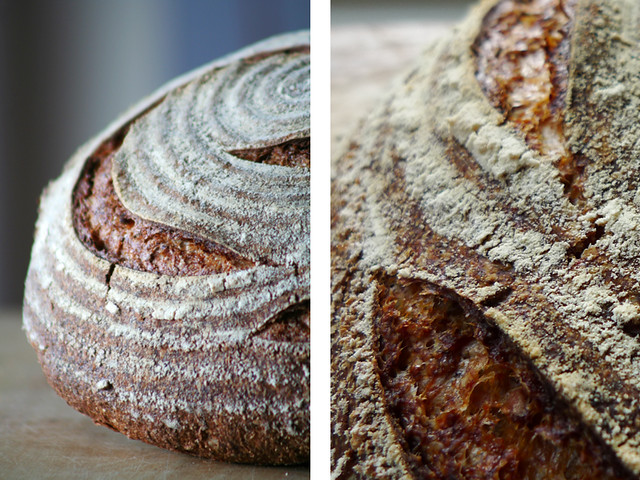
When my daughters arrived home after school and spotted this loaf I was quickly instructed to cut them a slice. The cracked rye was hidden away in the crumb from there prying eyes. It was demolished. Best crust I have had made for a while.
This bread has tang. Not overpowering, but lingering. The cracked rye is soft and barely registers in the mouth.
On a side note...with the formulas, would everyone prefer I use bakers percentages, weights or both. I am writing these the way I construct them, which I understand may not be the best for all people.
Cheers, Phil
** Update
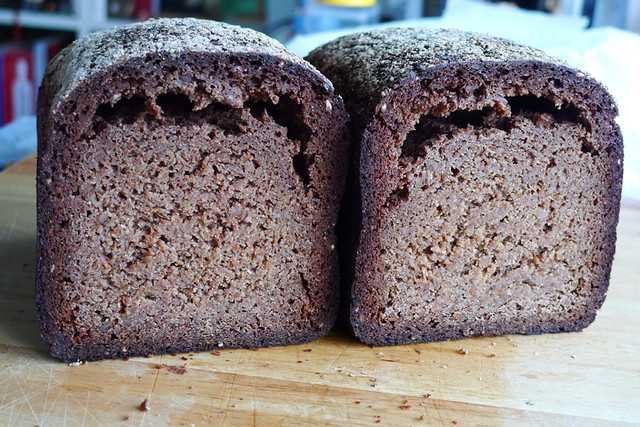
Well as expected my undocked loaves "lost their roof". If any experienced rye bakers have any clues that would be greatly appreciated. I know when I did this bread a few years ago I had the same issue and I think docking fixed it....thoughts?
Tastes fantastic. Dark, rich and quite sour ... but I am not happy with flying crust and I will bake for less time. Crust is not tough just too much colouring on outside of the loaf while lighter inside.
Cheers, Phil